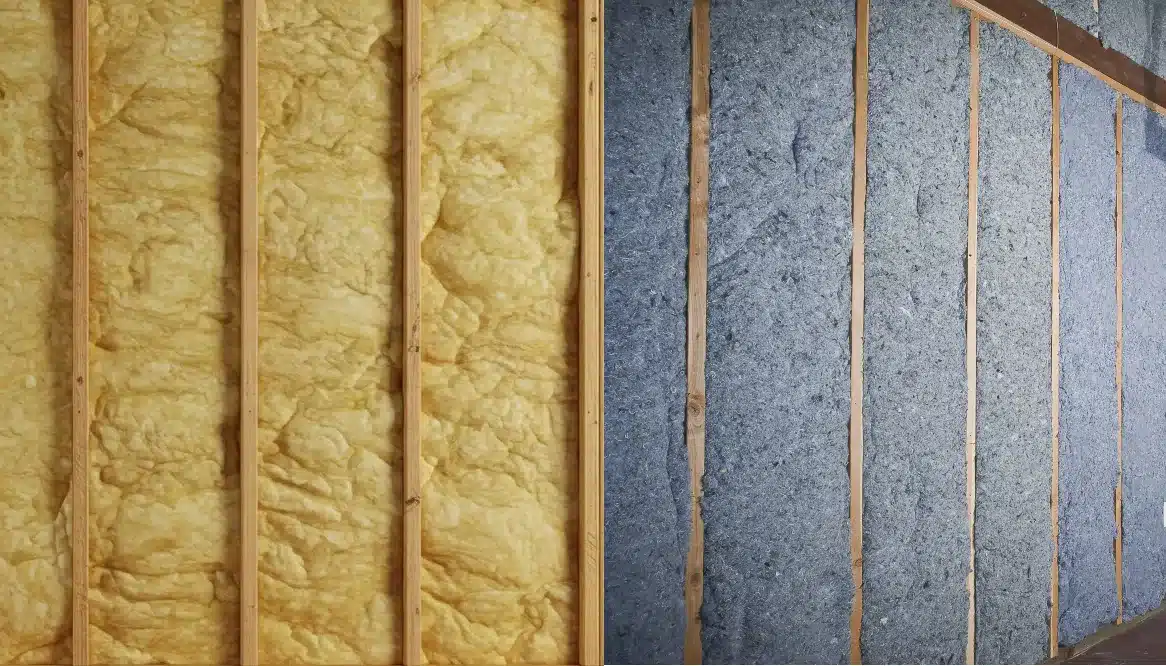Choosing the right insulation for a home or building is an important decision that affects energy efficiency, comfort, and long-term costs. Fiberglass and cellulose are two of the most commonly used insulation materials, each with distinct properties, advantages, and drawbacks. This comparison will explore their differences in performance, installation, cost, environmental impact, and more to help homeowners and contractors make an informed choice.
Understanding the Basics
What Is Fiberglass Insulation?
Fiberglass insulation is made from fine glass fibers and is available in batts, rolls, and loose-fill forms. It is widely used for walls, attics, and crawl spaces due to its affordability and effectiveness in reducing heat transfer.
What Is Cellulose Insulation?
Cellulose insulation consists of recycled paper products treated with fire-retardant chemicals. It is primarily available in loose-fill or dense-pack forms and is often blown into wall cavities or attics.
Performance Comparison
Thermal Resistance (R-Value)
- Fiberglass: Offers an R-value of approximately 2.2 to 4.3 per inch, depending on the type and density.
- Cellulose: Typically has an R-value of 3.2 to 3.8 per inch, making it slightly more effective at reducing heat transfer.
Higher R-values indicate better insulation performance, but installation quality also plays a critical role in effectiveness.
Air Sealing Capabilities
- Fiberglass: Does not inherently block air movement and often requires additional sealing measures.
- Cellulose: Provides better air-sealing properties as it can fill small gaps and cracks more effectively.
Moisture Resistance
- Fiberglass: Can retain moisture if exposed, leading to reduced insulation performance and potential mold issues.
- Cellulose: Treated with borates for fire resistance, but it can absorb moisture, requiring proper ventilation to prevent deterioration.
Installation Process
Ease of Installation
- Fiberglass: Comes in pre-cut batts that fit between standard framing, making it a common choice for DIY projects.
- Cellulose: Requires professional installation with specialized equipment for loose-fill or dense-pack applications.
Settling Over Time
- Fiberglass: Retains its shape but may sag in wall cavities over extended periods.
- Cellulose: Can settle by 10–20% over time, potentially reducing insulation effectiveness if not properly installed.
Environmental Impact
Sustainability
- Fiberglass: Contains some recycled glass but relies on energy-intensive manufacturing processes.
- Cellulose: Primarily made from recycled paper, making it one of the most eco-friendly insulation options.
Chemical Treatments
- Fiberglass: May contain formaldehyde (though modern options are low-formaldehyde or formaldehyde-free).
- Cellulose: Treated with borates for fire resistance, which are considered low-toxicity but can cause skin irritation.
Fire and Safety Considerations
Fire Resistance
- Fiberglass: Naturally non-combustible, but batts with kraft paper backing are flammable.
- Cellulose: Treated with fire retardants, making it resistant to combustion, though prolonged exposure to high heat may reduce its effectiveness.
Health and Safety
- Fiberglass: Can cause skin irritation and respiratory issues if inhaled during installation.
- Cellulose: Generally safer to handle but can create dust during installation.
Cost Considerations
Material and Installation Costs
- Fiberglass: Typically costs $0.40–$1.50 per square foot, making it one of the most budget-friendly options.
- Cellulose: Priced at $0.60–$2.30 per square foot, with installation often requiring professional services.
While cellulose is slightly more expensive, its air-sealing and insulation properties may lead to better energy savings over time.
Longevity and Maintenance
Lifespan
- Fiberglass: Can last 20–30 years if properly installed and maintained.
- Cellulose: Typically lasts 20–30 years but may degrade faster in high-humidity environments.
Maintenance Requirements
- Fiberglass: Minimal maintenance but may need replacing if moisture damage occurs.
- Cellulose: Can require topping off if settling reduces its effectiveness over time.
Choosing the Right Insulation for Your Needs
When deciding between fiberglass and cellulose, factors such as budget, climate, installation preferences, and long-term energy savings should be considered. Fiberglass is a practical option for those looking for an affordable, widely available, and easy-to-install insulation material. Cellulose offers better air sealing, higher sustainability, and a slight edge in thermal performance but may require professional installation.
Expert Guidance for Your Insulation Project
For professional advice and insulation installation, Prestige Insulation Solutions provides expert services tailored to your needs. Whether you are insulating a new home or upgrading existing insulation, our team can help you make the best choice for energy efficiency and comfort. Call us at (850) 429-4969 or email [email protected] to get started today.
Frequently Asked Questions
Which insulation type is more energy-efficient?
Both fiberglass and cellulose offer good thermal performance, but cellulose tends to provide better air sealing, leading to improved energy efficiency.
Is fiberglass or cellulose better for soundproofing?
Cellulose generally outperforms fiberglass in reducing noise due to its higher density and ability to fill gaps more effectively.
Can fiberglass and cellulose be used together?
Yes, some builders combine the two materials for enhanced performance, such as using fiberglass batts with a top layer of cellulose for better air sealing.
Is one insulation type better for extreme climates?
Cellulose performs slightly better in cold climates due to its higher R-value per inch, while fiberglass is more resistant to humidity-related degradation.
Does cellulose insulation attract pests?
No, the borate treatment in cellulose acts as a deterrent to pests and mold growth.
Can I install cellulose insulation myself?
While possible, it is best installed by professionals using specialized blowing equipment to ensure uniform coverage and avoid settling issues.
Which insulation is safer for indoor air quality?
Modern fiberglass options are low in VOCs, and cellulose is generally safe, though both should be properly installed to minimize dust exposure.
How do I know if my insulation needs replacement?
Signs like increased energy bills, drafts, or visible damage indicate it may be time to replace or upgrade insulation.
What is the most cost-effective insulation option?
Fiberglass is generally more affordable upfront, while cellulose may provide better long-term savings due to improved air sealing.
How does insulation affect my HVAC system?
Proper insulation reduces strain on heating and cooling systems, leading to lower energy costs and improved indoor comfort.



